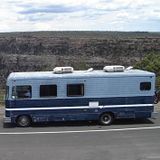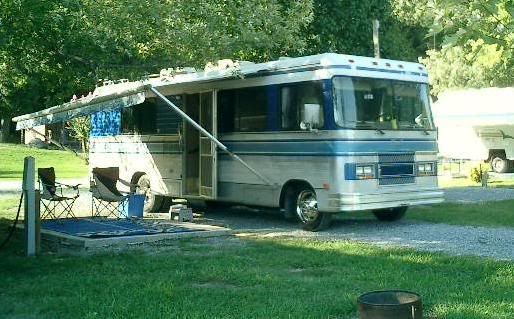Go to...  | Start A New Topic  | Search  | Notify  | Tools  | Reply To This Topic  |  |
http://www.youtube.com/watch?v=SH2cYWBZRi0&feature=related There doesn't seem to be any shortage of these vids on YouTube. | ||||
|
Jim; i haven't used it on a fuel line yet but from the demo's that the guy gives i am sure it will work better than clamps. So far i have only used it on my sewer hose, ( works way better than i thought it would!) and on some very small air lines that were giving me some problems.....again it works great. When i replace all of my radiator hoses i am going toss the clamps and wire them. | ||||
|
Captain Doom |
Before anyone gets too concerned about revamping everything, consider that fuels lines from the tank to the pump are at a vacuum; a leak while running introduces air into the system, not a leak of fuel. Fuel pumps generally output at 4-6 psi, just enough to keep the carburetor bowl filled. Stopped, fuel could leak onto the ground. Leaks in the line themselves (including vent lines and return lines), rather than the connections, are a bigger threat, and worse is a stuck or otherwise malfunctioning carburetor float valve, or a bad float. I installed a gaso genset (replacing the POS LPG Kohler) in my Barth. The genset fuel pump is on the side of the unit, and has a steel line to the carb. The carb has an overflow tube such that if the float valve sticks, the excess is deposited below the genset pan, so it can't accumulate. I also installed an anti-siphon valve, so even if the fuel supply hose is ripped, the fuel won't siphon out of the tank under the coach. The integrity of the fuel lines is important, IMHO, but more important is the conditions of the fuel pump to carb connections, and most important, the operation of the carb float valve. Without being redundant redundant, I'll reprise an old Navy saying: "You don't get what you EXPECT, you get what you INSPECT!" Any machinery, and specifically motorhomes the age of the Barths we enjoy, requires constant attention to conditions and the maintenance of all systems. I've previously mentioned the value of wallowing around under the coach several times a year (which I do). Seeing leaks and so forth (fuel, ATF, coolant), even if they can't be isolated by the owner due to inexperience, is valuable, as it can get a tech onto the issue. Rusty '94 28' Breakaway: MilSpec AMG 6.5L TD 230HP Nelson and Chester, not-spoiled Golden Retrievers Sometimes I think we're alone in the universe, and sometimes I think we're not. In either case the idea is quite staggering. - Arthur C. Clarke It was a woman who drove me to drink, and I've been searching thirty years to find her and thank her - W. C. Fields | |||
|
| First Month Member |
Hmmmm... that's interesting. How about some details? . 84 30T PeeThirty-Something, 502 powered | |||
|
Captain Doom |
Anti-siphon valves generally work in two ways. At rest, they have a spring-loaded (ball-check) valve that shuts the passage either way. For long fuel runs (such at the 18' or so to my genset), when the genny is shut down, fuel in the line doesn't drain back into the tank, so the carb doesn't have to purge air on every startup. When the genset is running, suction from the fuel pump opens the valve. However, the spring tension is such that if there is no vacuum applied to the valve, it stays closed, and so fuel can't be siphoned out of the tank through the valve. $17 at my local marine stuff dealer. Rusty '94 28' Breakaway: MilSpec AMG 6.5L TD 230HP Nelson and Chester, not-spoiled Golden Retrievers Sometimes I think we're alone in the universe, and sometimes I think we're not. In either case the idea is quite staggering. - Arthur C. Clarke It was a woman who drove me to drink, and I've been searching thirty years to find her and thank her - W. C. Fields | |||
|
 3/23 3/23 |
I might suggest a "preflight checklist" While the engine is warming and all systems are getting up to operating conditions a walk around to re-check latches on doors, awnings, removal of any setup equipment, drain valves closed etc. and a good sniff of the engine area. Of course this would have been preceded with a check of oil and coolant levels. Relative to the anti-siphon valve: A friend found these to be a significant problem with older tanks. The deposits of age and accumulation gathered in the anti-siphon valve and limited flow such that he was unable to maintain rpms above high idle on that engine. Since we were in the middle of Lake Michigan with 3 to 4 footers it was not pleasant, kind of like being on a two lane road in the mountains with no breakdown lane and lots of unhappy motorists behind. Just a thought. Tim | |||
|
Captain Doom |
There are a couple of things that mean I don't worry about those issues. First, the genset sucks about .33 gph at the loads at which I run it - with 5/16" tubing - 1/8" would actually work (the AS valve is 3/8". Non-leaded gaso has far fewer constituents to cause problems, but it still makes sense to remove, inspect, and clean/replace as needed. Rusty '94 28' Breakaway: MilSpec AMG 6.5L TD 230HP Nelson and Chester, not-spoiled Golden Retrievers Sometimes I think we're alone in the universe, and sometimes I think we're not. In either case the idea is quite staggering. - Arthur C. Clarke It was a woman who drove me to drink, and I've been searching thirty years to find her and thank her - W. C. Fields | |||
|
| First Month Member |
Inspection is great, both preflight and post flight. A fuel leak is less likely to be discovered while a cold engine is warming up and the fan is blowing. I like to do a check right after shutdown, when everything is warm and all clearances are wide. A clean ehgine and chassis makes it easier to see things, too. And the time spent cleaning counts double as inspection. I do some of my best thinking on a creeper underneath a Barth. Also, when you have stopped for pictures, sandwiches, or whatever, look for spots on the ground underneath as you walk back to the coach. Never park at a convenience store. The regular clientele there drive such wrecks that there are enough fresh oil spots to cause a cardiac event if you look underneath your vehicle. . 84 30T PeeThirty-Something, 502 powered | |||
|
 3/23 3/23 |
Ever see a convenience store parking lot closed to reseal the asphalt? | |||
|
 |
Rodents may have caused this. http://www.zwire.com/site/news.cfm?newsid=19441821&BRD=...dept_id=462341&rfi=6 Or perhaps a lack of a spring cleaning.... Matt 1987 Barth 27' P32 Chassis Former State Police Command Post Chevrolet 454 Weiand Manifold, Crane Cam, Gibson Exhaust | |||
|
| First Month Member |
Rats chew wires, too. As an avionics tech, I often found chewed-through wires causing failures. Never caused a crash, but now and then grounded an airplane when a no-go system failed. Some died from chewing through a live wire. Poison in your RV can cause the dreaded dead rat smell if the rat dies in a secret place. When I kept a fiver on a permanent spot on the Colorado River, we had rodents in the winter. I found the 2 inch dark blue square bars to be the best poison. It is so good that the rats would spurn the bars I set out, and tear into the fresher cellophane-wrapped ones. The virtue of these bars is that the poison makes the rat thirsty, so they leave the coach seeking water before they die. I bought them at Home Depot, but can't remember the brand. If anyone is interested, I will ask a coupla other people who might. . 84 30T PeeThirty-Something, 502 powered | |||
|
 6/12 6/12Formally known as "Humbojb"  |
I was doing a little research on what to use instead of teflon tape on NPT threads and ended up talking to Swagelok, the company that makes both 'Silver Goop' and another product called 'Swak'. Their tech people advised that if you want a sealant to use instead of teflon tape, use Swak. It costs $9.64 for a 50cc tube. Silver Goop is a lubricant, especially useful in high temperature applications, but is not a sealant. It costs $46.00 for a one oz. tube. So Swak it is. Besides, anything with that name deserves a try. (Remember your high school days, writing on the back of the envelope to your sweetheart "swak"?) Wait!! What's an envelope? What's 'writing'? Whoops, showing my age again. Jim
| ||||||||||||
|
| Powered by Social Strata | Page 1 2 3 |
| Please Wait. Your request is being processed... |
|
This website is dedicated to the Barth Custom Coach, their owners and those who admire this American made, quality crafted, motor coach.
We are committed to the history, preservation and restoration of the Barth Custom Coach.
We are committed to the history, preservation and restoration of the Barth Custom Coach.

